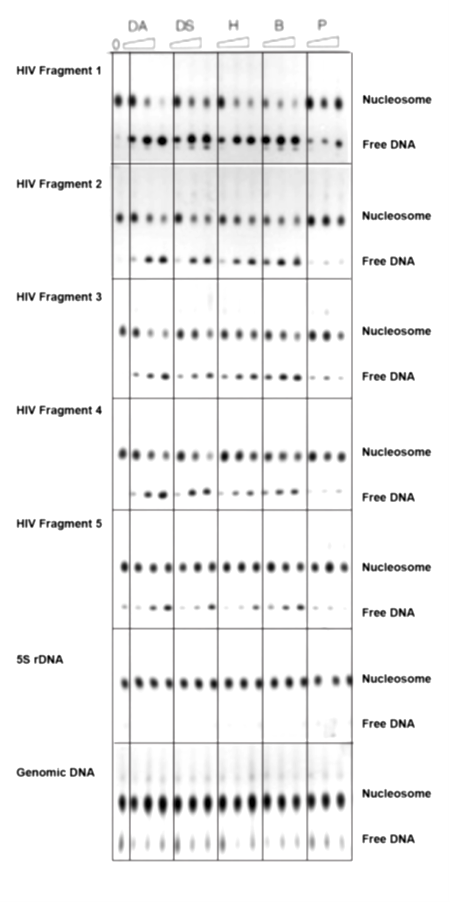HIV chromatin is a preferred target for drugs that bind in the DNA minor groove
01-15-2020
Writer(s): John Anderson

HIV chromatin is a preferred target for drugs that bind in the DNA minor groove
Clayton K. Collings, Donald W. Little IIII, Samuel J. Schafer, John N. AndersonID
PLOS ONE | https://doi.org/10.1371/journal.pone.0216515 December 30, 2019
The major challenge in current HIV research is the development of methods to eliminate the replication competent HIV provirus that has integrated as a double stranded DNA molecule within the host cell chromatin. This viral reservoir is activated upon session of antiviral drug therapy giving rise to new rounds of replication and the resumption of active infection. CRISPR/Cas9-based HIV-1/AIDS therapeutic strategies have been suggested as the best way to inactivate the HIV sequences in the genome but recent studies have shown that nucleosomes can strongly inhibit CRISPR-Cas9 targeting and cleavage efficiency. Our recent studies provide a way to circumvent this limitation.
The HIV genome is rich in A and this nucleotide bias controls HIV phenotype by determining the highly unusual composition of all major HIV proteins. The bias is also responsible for the high frequency of narrow DNA minor groove sites in the double-stranded HIV genome. Since drugs that bind in the DNA minor groove disrupt nucleosomes on sequences that contain closely spaced oligo-A tracts which are prevalent in HIV DNA because of its bias, it was of interest to determine if these drugs exert this selective inhibitory effect on HIV chromatin. To test this possibility, nucleosomes were reconstituted onto five double-stranded DNA fragments from the HIV-1 pol gene in the presence and in the absence of several minor groove binding drugs (MGBDs). The results demonstrated that the MGBDs inhibited the assembly of nucleosomes onto all of the HIV-1 segments in vitro and in yeast cells in a manner that was proportional to the A-bias, but had no detectable effect on the formation of nucleosomes on control cloned fragments or genomic DNA. These results show that the MGBDs preferentially disrupt HIV-1 chromatin in vitro and in vivo and raise the possibility that these drugs in conjunction with sequence specific DNA cleaving agents might serve as a novel class of anti-HIV agents.